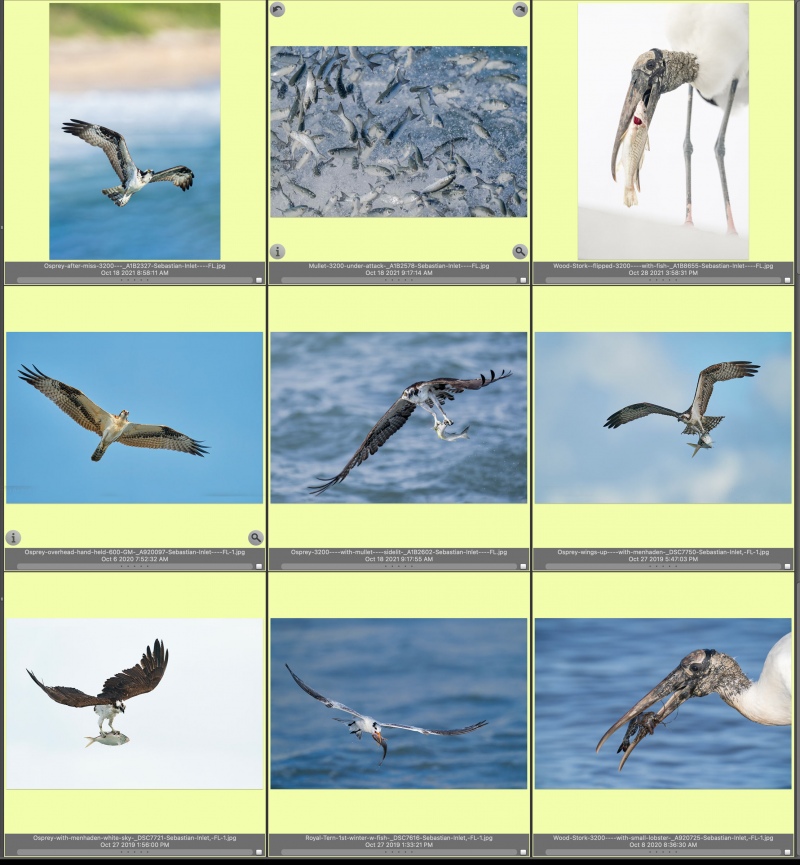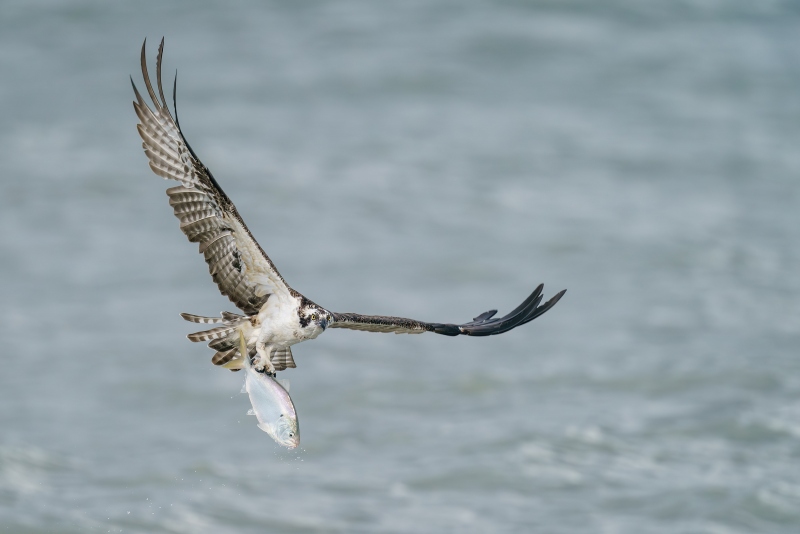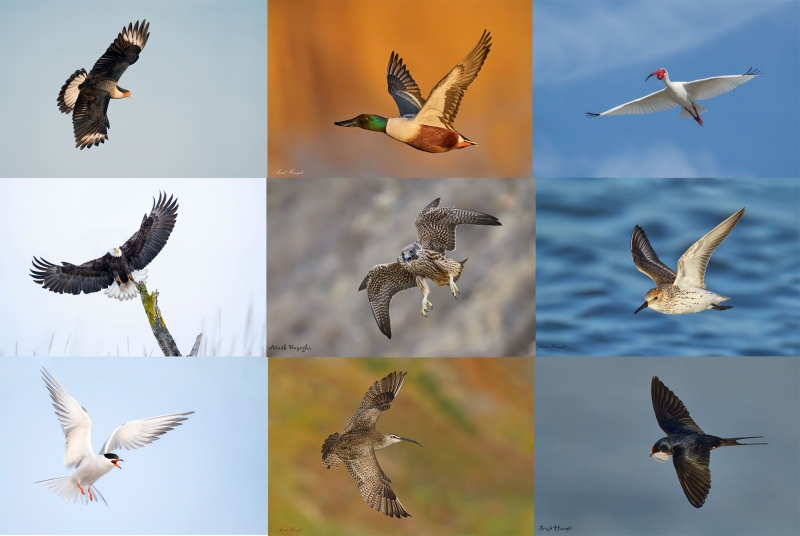What’s Up?
I was glad that my MacBook Pro M1 sold almost immediately after being listed yesterday. Soon after that, three more folks who wanted it got in touch. Yikes — with the 8tb SSHD, I priced it too low!
Today is Friday 13 October 2023. I will be working on the program that I will be doing on the 23rd of this month for the Delaware Photographic Society. Wherever you are an whatever you are doing, I hope that you too have a great day.
Please remember to use the B&H and Amazon links that are found on most blog pages and to use the BIRDSASART discount code at checkout when purchasing your new gear from Bedfords to get 3% back on your credit card and enjoy free second-day air FedEx. Please, also, consider joining a BAA IPT. You will be amazed at how much you will learn!
You can find some great photo accessories (and necessities, like surf booties!) on Amazon by clicking on the Stuff tab on the orange/yellow menu bar above. On a related note, it would be extremely helpful if blog-folks who, like me, spend too much money on Amazon, would get in the habit of clicking on the Amazon logo link on the right side of each blog post when they shop online. As you might expect, doing so will not cost you a single penny, but would be appreciated tremendously by yours truly. And doing so works seamlessly with your Amazon Prime account.
If an item — a Delkin flash card, or a tripod head — for example, that is available from B&H and/or Bedfords, is also available in the BAA Online Store, it would be great, and greatly appreciated, if you would opt to purchase from us. We will match any price. Please remember also to use my B&H affiliate links or to earn 3% cash back at Bedfords by using the BIRDSASART discount code at checkout for your major gear purchases. Doing either often earns you free guides and/or discounts. And always earns my great appreciation.
Thinking of a 2024 Homer IPT?
If you have been dreaming of attending one or both of the 2024 Homer IPTs, please shoot me an e-mail; I will do my very best to get you there with a large discount.
My Thoughts
In the Franklin Flats blog post, I preferred the intentionally blurred deadfall image because of its dreamy look. And yes, the few remaining eagles were visible as blurry blobs in Image #2. f/9 was needed to avoid over-exposure as I had already set the lowest possible ISO.
Kudos to David Policansky and Joel Eade for getting that one right.
Joel Eade. October 12, 2023 at 5:54am.
f/9 was needed to get a proper exposure at 1/15 sec because you were already at the lowest iso setting available.
Arthur Morris/BIRDS AS ART. October 12, 2023 at 7:13am.
Hey Joel, Excellent explanation on the f/9. There must be some learning going on here as the last time I asked that same question nobody had a clue.
It is always best to reduce the ISO rather than use a smaller aperture as the latter causes problems with dust spots. Best is to use an ND filter.
with love, artie
|
|
|
Clockwise from the upper left back around to center: Osprey gaining altitude after missed strike; school of mullet under attack from below; Wood Stork with Southern Whiting; Osprey with Menhaden; Wood Stork with small lobster; Royal Tern with large baitfish; Osprey with Menhaden; juvenile Osprey directly overhead “t-shot”; Osprey taking flight with freshly caught Mullet. |
Sebastian Inlet In-the-Field Sessions
Join me for 3 hours of morning or afternoon In-the-Field Instruction at Sebastian Inlet for only $300.00/session (or $500 for a full day with two sessions). The main target will be fishing Ospreys hunting for a variety of migrating saltwater fish that visit the inlet each fall. Back-up subjects include fishing gulls, terns, and Brown Pelicans, Wood Stork, a variety of herons and egrets, shorebirds in the afternoon, sunrise cloud-scapes, and the occasional sea turtle or manatee.
October Dates: 21, 22, 24-29, 2023.
November Dates: 6-10, 2023.
Please get in touch via e-mail to book one or more sessions.
|
|
|
This image was created on 26 October 2019. Standing at full height, I used the Robus RC-5558 Vantage Series 3 Carbon Fiber Tripod/Levered-Clamp FlexShooter Pro-mounted Sony FE 600mm f/4 GM OSS lens with the Sony FE 1.4x Teleconverter, and the Sony a9 II (now replaced by The One, the Sony Alpha 1 Mirrorless Digital Camera.. ISO 800: 1/2500 second at f/6.3 (stopped down 1/3-stop) in Manual mode. This image was created before I began learning from RawDigger; the raw file was 1 2/3-stops too dark! AWB at 9:26:28am on a cloudy morning. Center Zone/AF-C performed perfectly. Be sure to click on the image to enjoy the larger, sharper, high-res version. Image #1: Osprey with a freshly-caught Menhaden (bunker) |
Lenses for Fishing Osprey at Sebastian Inlet
A variety of lenses can be used successfully to photograph the fishing Ospreys at Sebastian Inlet. I’ve used the 600mm f/4 on a tripod a lot, often with the 1.4x TC. When a bird flies directly overhead, a shorter handheld lens can be perfect. A 200-600 or 100-500mm lens is often a great choice, especially on sunny days. Folks using a Levered-Clamp FlexShooter Pro have the option of quickly un-mounting a big tripod-mounted lens and handholding it when a bird flies directly overhead.
At times, 80- or 100-400mm lenses can be ideal.
More recently, I have begun using the handheld 400mm f/2.8 lens, again, often with the 1.4X TC. Handholding is often a huge advantage when the birds are either very close or overhead.
|
|
|
Click on the composite to view a larger version and be even more impressed. The Art & Science of Photographing Birds in Flight with the Sony α-1
|
The Art & Science of Photographing Birds in Flight with the Sony α-1
by Arash Hazeghi and Arthur Morris
First of all, if you use Nikon or Canon (or Olympus or Fuji) gear, do not be put off by the title. While a portion of the guide deals with the Sony α-1, there is a ton of priceless information, tips, and techniques that can help you become a better flight photographer. No matter what system you are using. If you don not use an α-1, be sure to read down to the bottom to save a few bucks.
Arash Hazeghi and Arthur Morris have created the definitive and most comprehensive ever treatise on photographing birds in flight. With more than sixty years of experience photographing birds, they know what you need to know but have not figured out yet! You will be astounded by the depth of their knowledge and the tips they have to offer. More than six months in the making, the guide contains 229 pages, 24,321 words,97 exceptional and inspirational flight images — each with a legendary, enlightening BIRDS AS ART caption, and 22 screen captures. The guide contains a wealth of useful, practical, and for the most part — never-before-available information.
Purchase
Click here to purchase your copy in the BAA Online Store.
What Everyone Will Learn
We will teach you the basic concepts that you need to master to become a great flight photographer along with the techniques used by the world’s best flight photographers.
You will learn that most any telephoto lens can be perfect for flight photography in a given situation; focal lengths for the images in the book range from 200mm to 1200mm and everywhere in between.
We discuss the merits of various lenses in depth, including and especially comparing the 400mm f/2.8 lenses with the 600mm f/4s.
We guide you in getting your hands on the flight photography lens that will best meet your needs. We offer a variety of handholding and rest position tips and include tips on working with a big lens on a tripod when working with a flight lens that is otherwise too heavy for you.
Both authors offer their thoughts on getting the right exposure when photographing birds in flight. You will learn to get the right exposure on foggy days and even when photographing black birds in white sky conditions.
You will learn the tremendous importance of pre-focusing, of finding the bird in the viewfinder quickly, acquiring focus almost instantly (with tips on doing all three).
You will learn the role of image stabilization in flight photography and the best settings.
Both authors share their thoughts on using the focus range limiter switch. In the same vein, you will learn to use Direct Manual Focus to make your flight photography life easier.
All will learn about the best wing positions and the importance of the background with images of birds in flight. With lots of examples.
You will learn about the best shutter speeds (and the best aperture) to use when photographing flying birds.
You will learn to photograph flight while seated and the many advantages of doing so.
You will learn the best methods of controlling high ISO noise.
All will learn to properly and safely format their flash cards.
You will learn what to do when your AF system is temporarily blinded.
All will learn the huge effect that wind strength and direction has on flight photography and to evaluate the quality and direction of the light on both sunny and cloudy days.
You will learn why it is vitally important to shoot aggressively when photographing birds in flight.
You will learn to carefully observe and evaluate a variety of bird behaviors that may shine light on some excellent opportunities for photographing birds in flight. And about getting into the best position from which to photograph.
You will learn to be a much better flight photographer.
What Sony Folks Will Learn
Exactly how Artie uses Zebras to come up with perfect exposure after perfect exposure.
The fine points and recommended settings for Optical Steady Shot (OSS).
The concept of Auto-Focus (AF) tracking in the α-1.
Everything there is to know about the complex Sony autofocus system.
About all the AF patterns, how to quickly switch them, and about those favored by each author. And why.
The Tracking and Non-tracking AF patterns. When and why Arash uses Non-Tracking Zone. And why Artie uses only two AF patterns.
How to set and use Bird Face-Eye detection for flight photography.
How and why to assign various custom functions to the various programmable buttons on the α-1 body.
The perfect settings for the many, many Menu items that are vitally related to flight photography.
How and why the Sony α-1 uses both contrast and phase detection AF to determine focus (and the benefits thereof).
Which are the best memory cards for the Sony α-1.
To quickly access frequently used menu items.
Non-Sony α-1 Discount
Using the honor system, folks who do not use a Sony α-1 body are invited to click here to save $25.00 on the purchase price of the guide.
Typos
With all blog posts, feel free to e-mail or to leave a comment regarding

















Arthur:
Thank you for providing the non-a1 user discount on the flight guide. I found the price to be fair and the volume of information to be worth the purchase. The additional $25 for a1 users seems like a bargain, given the amount of information in there for that camera. This pricing structure was a good way to solve the question of whether to produce a second version that eliminated the a1 usage information.
BTW, the osprey in flight shot is unusual. I usually see this type of shot where the osprey has grabbed the fish closer to the head. In your shot, we can see the whole fish. Nice capture.
Regards,
Bruce
Hey Bruce,
Thanks for your kind comments. And your kind words.
with love, artie
Image#1 Osprey with a freshly-caught Menhaden is interesting and cute! And the other 2 images are also interesting showing 8 or 9 flying! The first image of all the birds flying also shows a picture of a bunch of hundreds of birds flying also!